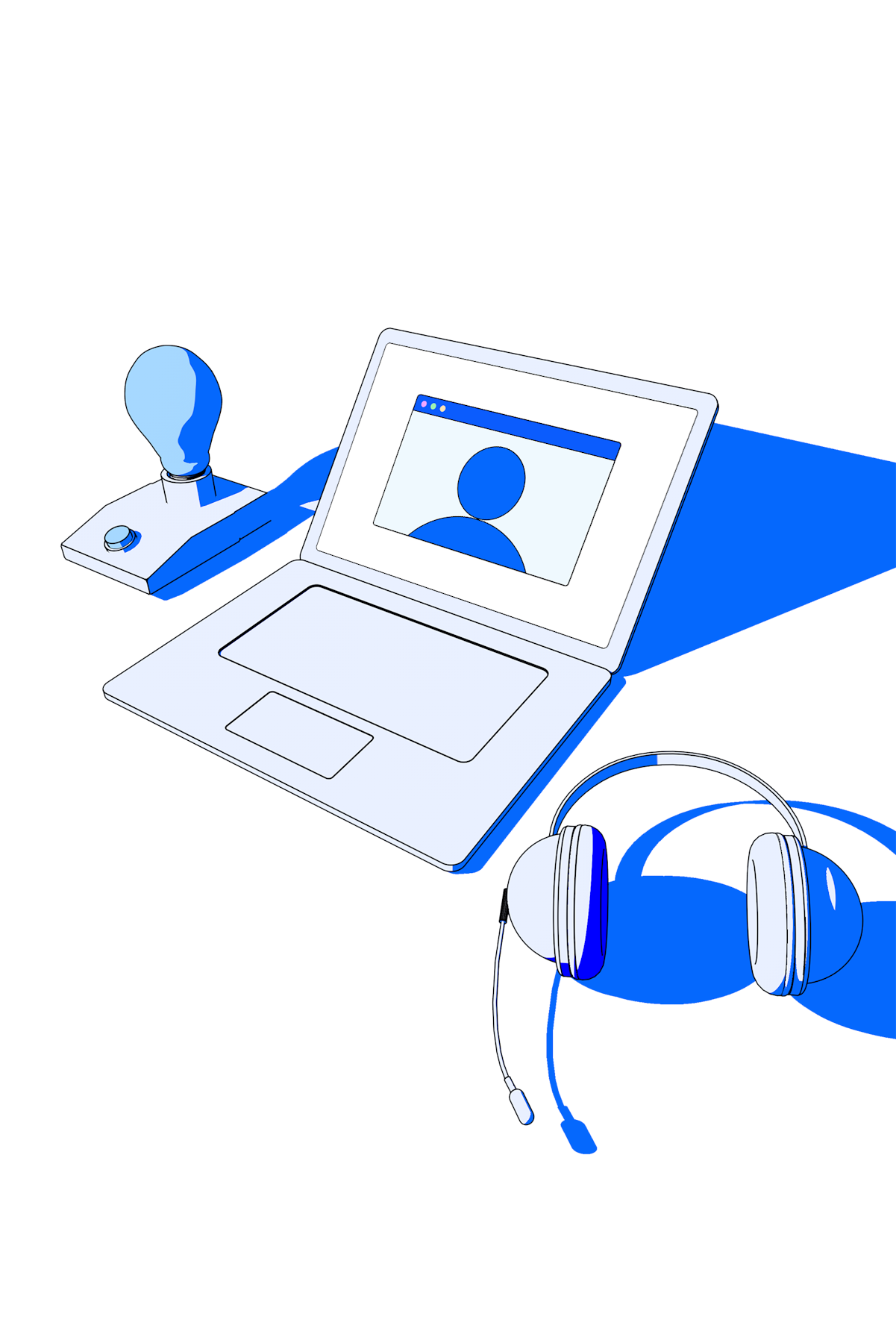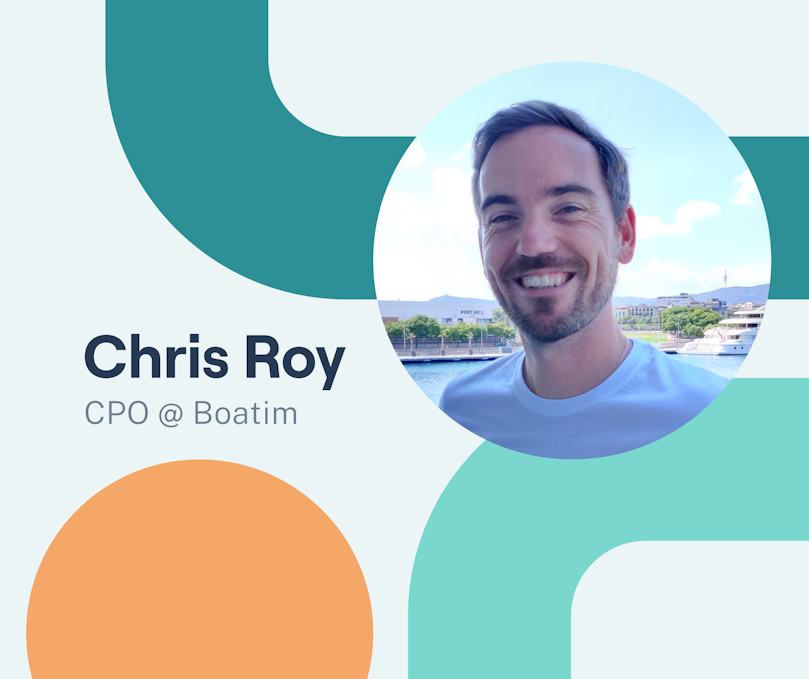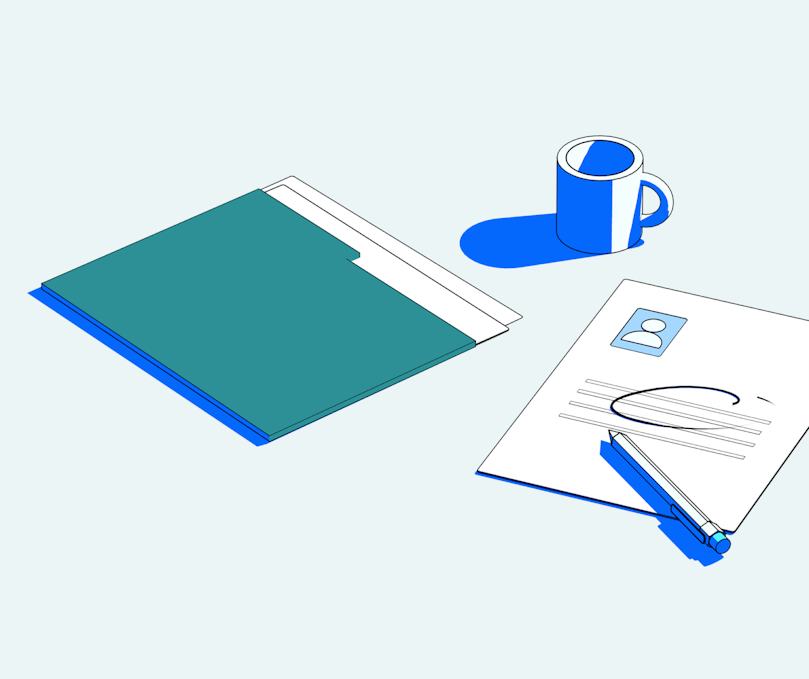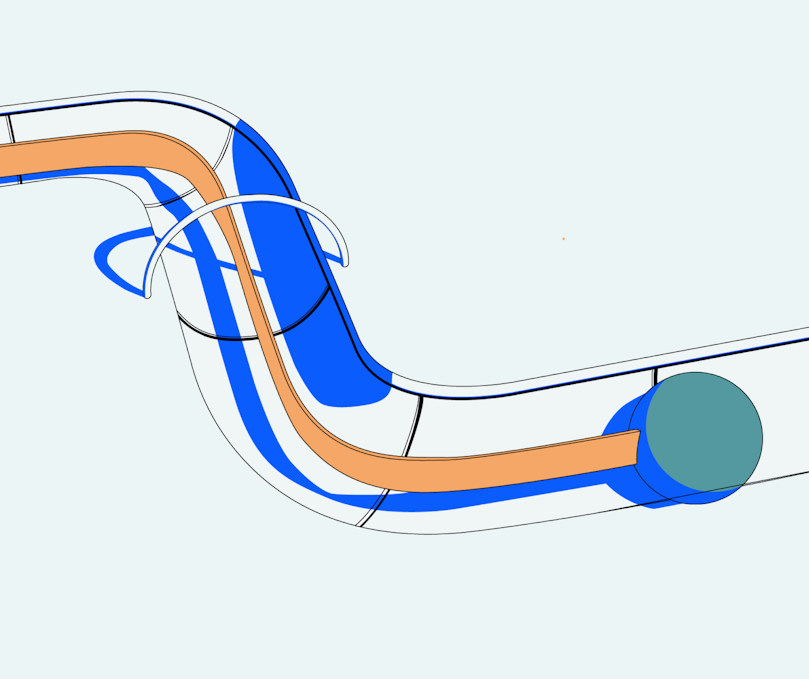George Markos leads the Customer Success efforts at Maze. When he joined Maze in September 2019, one of the first initiatives he introduced was our Customer Advisory Board. In this article, he shares why he created this board, the benefits we’ve seen from regularly keeping in touch with customers, and more.
A Customer Advisory Board (CAB) represents a group of customers who meet with you on a regular cadence to advise on strategic directions, such as the product roadmap and upcoming features. At Maze, we collect user feedback early and believe the people you’re building for should be involved throughout the product development process.
From market research to user testing upcoming features, a CAB offers immense benefits. In this article, I give you an inside look at our Customer Advisory Board, the benefits of having one, and also share the setup we have at Maze to meet with our CAB members as a fully remote company. We hope this will inspire you to create your own Customer Advisory Board and involve customers in building your product.
Why we created our Customer Advisory Board
Are the new features you’re building actually valuable to customers, or are they just shiny new things?
Share
Providing a great customer experience is entrenched in Maze’s DNA. I joined Maze to set up the foundations of Customer Success in September 2019, back when the company was just six employees. My goal was to get the Customer Success efforts up and running to support Maze’s growth.
One of the established values at Maze that I particularly liked was the idea of embracing vulnerability, which for us means getting internal and external feedback on everything we do. Based on my previous experiences at startups, I knew this to be important. A few years ago, unfortunately, I experienced an organizational shut down after the company ignored our users’ feedback.
Being a fast, agile team that releases feature after feature is great, but I’ve seen what happens when companies don’t listen to users. As a company, the question you should always ask is, “Are the new features you’re building actually valuable to customers, or are they just shiny new things?”
So, to embrace our notion of vulnerability and bring our customers’ voice into the build process, I started to reach out to a group of people and set up the first version of the Customer Advisory Board. Today, our CAB consists of more than 90 customers we regularly contact for feedback and keep in touch with (more on this later).
The benefits of a Customer Advisory Board
The ultimate goal of the Customer Advisory Board was to validate our ideas with customers to ensure we’re on the right track. The benefits of having access to a group of people who are passionate about what we’re building became immediately clear. Here are three advantages the CAB customers bring into the product development process at Maze.
1. Early feedback from customers
The major benefit of the Customer Advisory Board is that you get continuous feedback from your top customers, not only on existing features but also on future features.
Share
Without an open line of communication to your customer base, most feedback falls on the company’s “first line of defense.” These are typically the support reps fielding customer support tickets, or the Customer Success and Account Management teams, who are usually the main point of contact for customers. These employees will notice trends in feedback for existing features, and possibly even escalate them internally. Ultimately, this type of feedback comes a little too late—after a feature has already been launched—and gets drowned out by other priorities.
The major benefit of the Customer Advisory Board is that you get continuous feedback from your top customers, not only on existing features but also on future features. This is a key point. Without presenting your roadmap ideas to customers, they’re often “surprised” by your product releases, only report bugs or issues after the fact, or don’t use the feature at all because it doesn’t solve an existing problem.
With a Customer Advisory Board, we have a direct line of contact for features in-development, which ultimately saves us an enormous amount of time post-release. Similar to prototyping and usability testing, getting early feedback, and validating ideas with our customers before we build helps us push out a better product with fewer iterations. This brings us to our next benefit: discovery.
2. Product discovery and validation
In one conversation with this customer, we went from a simple duplicate feature to the possibility of having an entire testing library in Maze. This is the hidden gold the Customer Advisory Board reveals.
Share
Presenting your company ideas to your customers can help your product bloom. On almost every one of our Customer Advisory Board calls, an idea or feature that the internal team hasn’t thought of before comes up.
When you bring in an outside voice—from a completely different company that uses different terminology and uses the product in a different context—you start to challenge your preconceptions and biases and see the product from the customer’s perspective.
For example, Maze originally started as a user testing tool. At the time, you could only import a prototype and run a test with that prototype. But we started getting feature requests and feedback from our CAB customers that they don’t always want their research to be tied to a prototype—they just want to ask their users some questions. This gave way to Maze Discovery, a new solution that allows our customers to get insights and feedback from their users before the design process begins.
Similarly, a question we got a lot in our support conversations with users was if they can duplicate their questions from one project to another. So, in our Customer Advisory Board sessions, I started to ask if our customers would appreciate the ability to duplicate a project and change the prototype link. That was initially the solution that we were thinking of implementing.
Then, one of our Board members had an idea: What if instead of just the ability to duplicate a project, why not let users “save” the questions they already created? Ultimately, it turned out they wanted to build a “question library” inside Maze, so anyone on their team could view and reuse the templates and make the test creation process a whole lot easier. In one conversation with this customer, we went from a simple duplicate feature to the possibility of having an entire testing library in Maze. This is the hidden gold the Customer Advisory Board reveals.
3. Engaged, delighted customers
Last but not least, customers love to be a part of a selected group of individuals who get to contribute to building the product. They feel special that they have the opportunity to shape the future of the product they’re using.
So far, we’ve had a 100% retention rate for our Customer Advisory Board members, meaning none have asked us to stop contacting them or to drop out of the board. What’s more, the board has grown 4x in the last quarter. Being able to present our ideas to our customers, who are also passionate about the design space, is the ultimate rewarding experience. It’s a win-win relationship on all fronts, where our customers have a meaningful impact on the product while we have the opportunity to validate ideas, be vulnerable to feedback, and change some less-than-stellar first iterations.
Forming the Customer Advisory Board
The first step we took to create our Customer Advisory Board was to ask ourselves who we’d like to invite. A few factors went into this decision, but it was ultimately restricted not on external criteria but internal limitations. Being the only Customer Success employee at the time, I could only handle so many conversations at once. Now our CAB has grown to more than 90 members, and our goal is to have at least 25 conversations per round.
Given the importance of this board, we wanted the members to come from different roles (UX designers, researchers, etc.) and consist of all levels of our plans (Free, Starter, Team, and Enterprise). When deciding who to invite to your CAB, consider the following criteria about a customer to make sure they fit your target audience and personas:
- Level of seniority and job title
- Organization size and market
- Frequency of use: how often do they use the product?
- Industry knowledge: how familiar are they with the competitive landscape?
- Are they a “vocal” customer? Has this member provided good feedback in the past? You can source this from support tickets, social media mentions, NPS responses, or general knowledge that the customer likes to provide feedback.
For us, an important guideline was frequency of use. We invited those customers who use Maze every week. To start, we sent out an email invite, which was honest about the fact that we’re presenting them with the opportunity to provide feedback on upcoming Maze features.

One of the emails we sent to invite customers to join the CAB
The response to this invite was overwhelmingly positive, and so the Maze Customer Advisory Board was created.
Now that we had a group of individuals ready to provide us with feedback, we had to figure out the logistics and think about what we’ll present or ask, how we’ll run the sessions, and most importantly, how to translate the feedback we get into digestible information for the Maze team to read and act on.
Preparing for the CAB round
Even though we like to keep the meetings short and simple for our CAB members, we make sure to prepare for the calls to get the most out of them. Here’s how we plan a round of CAB meetings:
- Everyone in the company can submit a question for us to discuss with customers. We have a monthly deadline to source questions and collect any mockups from the design team that are ready for feedback.
- Once we gather the questions and mockups, the Customer Success team reviews the information and chooses the topic for that month’s CAB round
- If we sourced design mockups or prototypes from the design team, we work together with the product team to create a Maze test which we’ll share with the members
- We email the CAB members to let them know the topic and plan the calls, which gives them a chance to opt-in or out, depending on their preference. For example, if someone requested our Maze Discovery feature, they would be super excited to discuss that.
Each round, we aim to meet with at least 25 members to consider that a successful round.
Running the meetings
I wanted to keep the calls with our CAB members as casual as possible. These should be exciting and fun interactions for our members. Our setup is simple and easy to organize. We hold one-on-one, nonrecurring Zoom calls with our members once a month. All CAB members have the option to join or not based on the topic that month. Here’s an example of how one of our calls looks in practice:
- We share the Maze test with the design mockup of a new feature the product team is working on
- We open up the discussion and address specific questions our team has on the subject
- Finally, we give the board members time to address any topics they want to discuss, such as feature requests or pain points.
We keep the calls short and sweet, around 30 minutes or less.
Relaying the feedback back to our team
You need to spread that feedback, information, and questions you get from customers back to your team in order to make the insights actionable and the effort worthwhile.
Share
The main concern with setting up a Customer Advisory Board is the time it takes to manage. Creating an in-depth feedback loop is necessary to make these efforts valuable to the team. Collecting feedback is great, but not enough. You need to spread that feedback, information, and questions you get from customers back to your team in order to make the insights actionable and the effort worthwhile.
Here at Maze, the first step in compiling this information is to look for themes across all the conversations we had. After the round ends, the Customer Success team takes the raw data of these conversations and creates a snapshot view for our entire team to review and discuss. Here’s what we do:
- If there was a design mockup to test, we present the findings from the prototype test back to the team in a digestible way via the Maze report. The report includes a usability score and data about each screen in the prototype, which the design team can easily act on.
- We also create a Pitch deck to make the digestion of all the feedback easier for our team. The deck usually presents common themes, both positive and negative feedback, interesting quotes, and any outlier ideas that stood out to the CS team during these conversations.
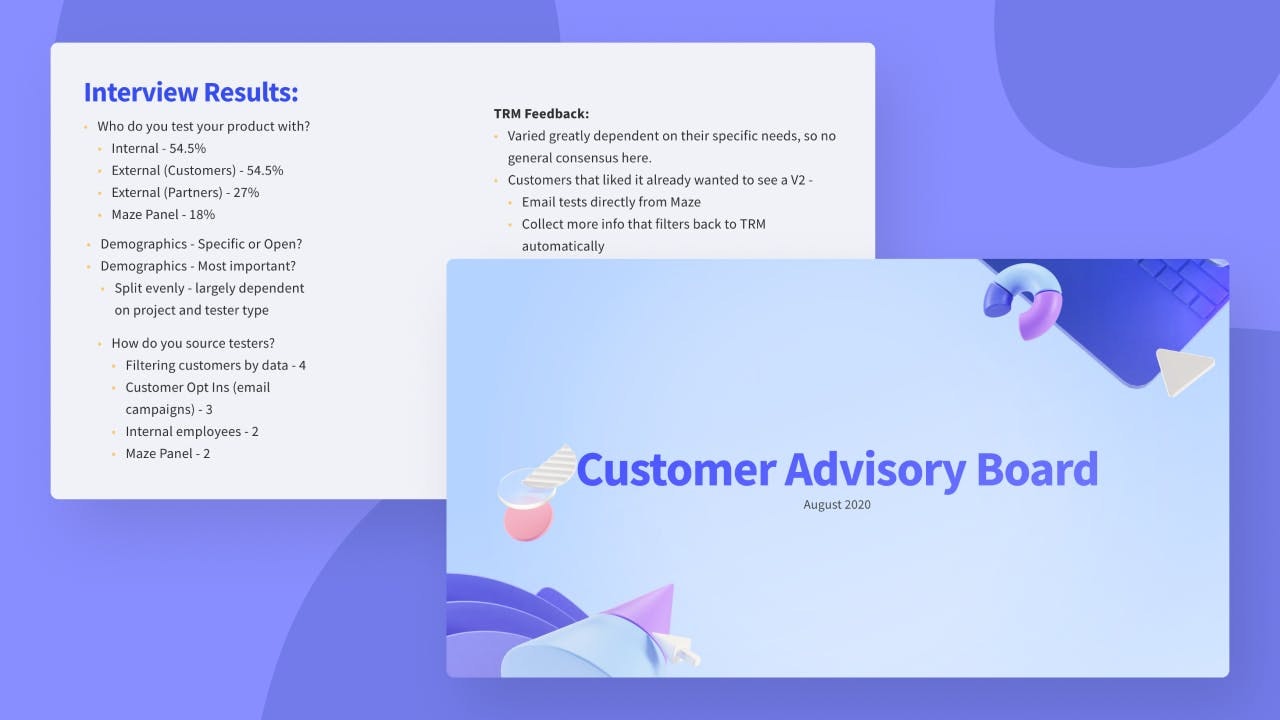
Customer Advisory Board deck (August 2020)
- Additionally, I also create a Loom video walking the team through the deck and providing a bit more context around the data. The Loom typically takes less than 10 minutes to create, but it helps us avoid a company-wide meeting around each Customer Advisory Board and allows our internal stakeholders to review the information in their own time.
At the end of each round, the entire company receives the raw data, a Maze report, a Pitch slideshow, and a Loom video. Everyone can digest the information in the format they prefer.
Conclusion
Similar to the friend that will give you their honest opinion, our CAB members provide us with candid feedback so that we can, in turn, build the best product possible.
Share
The opportunity to have one-on-one conversations and explore our product ideas with passionate members of the design community, lets us know when we missed the mark or when we solved our customers’ pain. Being able to validate our ideas is invaluable.
Similar to the friend that will give you their honest opinion, our CAB members provide us with candid feedback so that we can, in turn, build the best product possible.
Want to be the first to see what Maze is building while sharing your thoughts and opinions? Let me know by emailing customersuccess@maze.design and I can add you to the Maze Customer Advisory Board!
